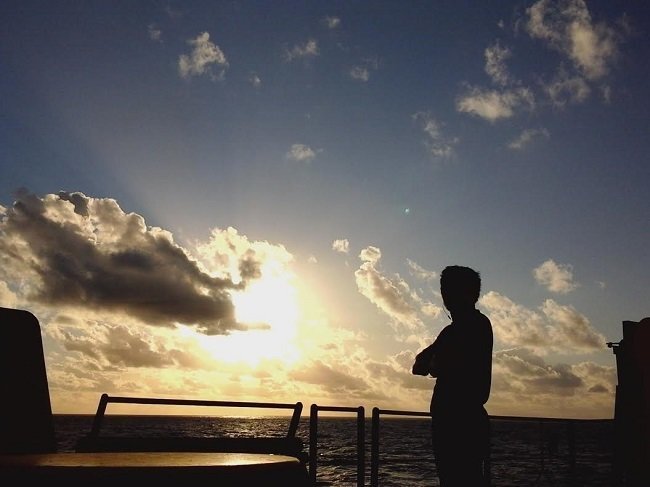

The security levels under the ISPS code describe the current scenario related to the security threat to the country and its coastal region including the ships visiting that country.
The security levels are decided by the cooperation of ship and port authorities, keeping the current condition of national and international security.
The local government sets the security level and ensures to inform port state and ships prior to entering the port, or when berthed in the port.
All personnel onboard ships and port state staff are assigned security duties, which are different for people of different levels. Moreover, frequent security drills are also carried out onboard ships.
As soon as the security level has been decided as per the ISPS code, it is displayed prominently onboard vessel at the entrance of the ship.
It should be noted that the MARSEC level of the ship should always be the same or higher than the port’s MARSEC level.


For any of the security levels, the following are the general points to be kept in mind:
The normal level that the ship or port facility operates on a daily basis. Level 1 ensures that security personnel maintains minimum appropriate security 24/7.
In this, all those liable to board must be searched. The frequency of the same should be specified in the SSP. Such searches are to be carried out in coordination with the port facility.
It is important to remember the human rights angle of the individual being searched and the search should not violate their dignity.
A heightened level for a time period during a security risk that has become visible to security personnel. Appropriate additional measures will be conducted at this security level.
At this level, the SSP should establish the measures to be applied to protect against the heightened risk. Higher vigilance and tighter control with regard to the security of the ship is in play here.
Will include additional security measures for an incident that is forthcoming or has already occurred that must be maintained for a limited time frame. The security measure must be attended to although there might not be a specific target that has yet been identified.
Again, the SSP should be adhered to and with strong liaison with the port facility. The following measures should be put in place with the highest degree of vigilance and detail:
The SSP must identify areas that are restricted which are to be established on board. The purpose of such areas is to restrict access, protect the personnel on board, protect the cargo from pilferage or tampering etc.
The restricted areas may include the navigation bridge, machinery spaces, spaces with security-related equipment, ventilation spaces, spaces containing IMDG cargo, accommodation, any other areas specified as per the SSP.
With regard to the restricted areas, the measures to be applied to them are as follows:
Security measures are in place vis a vis cargo operations to prevent tampering as well as to prevent the carriage of any cargo that has not been authorised or established to be carried onboard. The following measures can be used as a reference:
Stores should be checked for packing integrity including random checks on samples. Nop stores should be accepted without inspection; check if tampered with if accepted. Unless ordered, stores should not be accepted.
Double-check with documentary evidence about what has been ordered and what has not. Following measures may be used as reference:
Baggage must be screened before taking on board; use advanced methods such as X-ray if needed.
The aspect of monitoring must cover lighting, watchkeepers including security guards for patrolling, intrusion detection devices. These intrusion devices must be capable of setting off an alarm.
The ship’s deck and access points should be illuminated in darkness as well as the vicinity of the ship depending on the extent of security threat that is at stake. In ports prone to contraband smuggling, an underwater hill check must also be carried out.
The security of the ship and the port are complementary to each other. One cannot be safe without the help of the other. The SSO and PFSO’s communication and cooperation is essential to the compliance of the SSP and the upkeep of security levels.
If you liked this article, you may also like to read ISPS Code & IMO.
Disclaimer: The authors’ views expressed in this article do not necessarily reflect the views of The Marine Learners. Data and charts, if used, in the article have been sourced from available information and have not been authenticated by any statutory authority. The author and The Marine Learners do not claim it to be accurate nor accept any responsibility for the same. The views constitute only the opinions and do not constitute any guidelines or recommendations on any course of action to be followed by the reader.
The article or images cannot be reproduced, copied, shared or used in any form without the permission of the author and The Marine Learners.










We believe that knowledge is power, and we’re committed to empowering our readers with the information and resources they need to succeed in the merchant navy industry.
Whether you’re looking for advice on career planning, news and analysis, or just want to connect with other aspiring merchant navy applicants, The Marine Learners is the place to be.